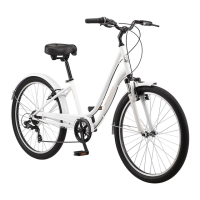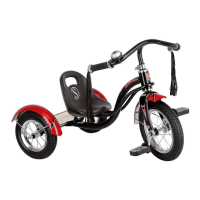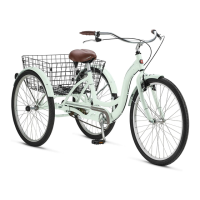©2010
RIDING SAFETY
General Rules
• When riding obey the same road laws as all other road vehicles, including giving way to pedestrians, and stopping
at red lights and stop signs. For further informaon, contact the Road Trac Authority in your State.
• Ride predictably and in a straight line. Never ride against trac.
• Use correct hand signals to indicate turning or stopping.
• Ride defensively. To other road users, you may be hard to see.
• Concentrate on the path ahead. Avoid pot holes, gravel, wet road markings, oil, curbs, speed bumps,
drain grates and other obstacles.
• Cross train tracks at a 90 degree angle or walk your bicycle across.
• Expect the unexpected such as opening car doors or cars backing out of concealed driveways.
• Be extra careful at intersecons and when preparing to pass other vehicles.
• Familiarize yourself with all the bicycle’s features. Pracce gear shis, braking, and the use of toe clips
and straps, if installed.
• If you are wearing loose pants, use leg clips or elasc bands to prevent them from being caught in the chain.
• Wear proper riding are and avoid open toe shoes.
• Don’t carry packages or passengers that will interfere with your visibility or control of the bicycle.
• Don’t use items that may restrict your hearing.
• Do not lock up the brakes. When braking, always apply the rear brake rst, then the front.
The front brake is more powerful and if it is not correctly applied, you may lose control and fall.
• Maintain a comfortable stopping distance from all other riders, vehicles and objects.
• Safe braking distances and forces are subject to the prevailing weather condions.
BEFORE YOU RIDE
18

